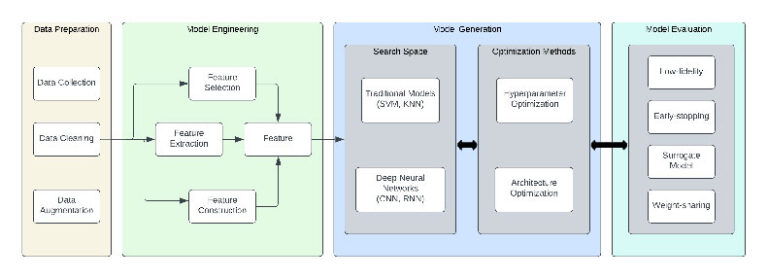What is Automated Incident Response
Table of Contents
- Why is AIR Important?
- How Does Automated Incident Response Work?
- Benefits of Using Automated Incident Response (AIR)
- Key Considerations When Implementing AIR
- Types of Automated Incident Response (AIR) Solutions
- Common Use Cases for Automated Incident Response (AIR)
- Limitations of Automated Incident Response (AIR)
- The Future of Automated Incident Response (AIR)
- Conclusion
Automated Incident Response (AIR) or SOAR (Security, Orchestration, Automation & Response), refers to a technology-driven approach to managing cybersecurity incidents.
Traditional incident response involves manual tasks like investigating suspicious activity, containing threats, and restoring systems.
With the help of Artificial Intelligence and Machine Learning, AIR automates specific steps within this process, enabling organizations to react to security events faster and more efficiently than ever before.
Why is AIR Important?
In today’s digital age, cyberattacks are a constant threat.
Security teams face a growing volume and complexity of security events, making it challenging to keep up with manual response processes.
But they have a new ally: Artificial Intelligence and Machine Learning. Both, offer several advantages:
- Faster Response Times: Automation streamlines incident detection, investigation, and remediation, minimizing the window of opportunity for attackers.
- Reduced Costs: Automating tasks with AI reduces reliance on manual labor, lowering the overall cost of incident response.
- Improved Accuracy: Machine Learning eliminates human error in repetitive tasks, leading to more consistent and reliable outcomes.
- Enhanced Scalability: AIR systems can handle large volumes of security events efficiently, regardless of an organization’s size.
- 24/7 Monitoring: AIR provides continuous threat detection and response, even outside of regular business hours.
By implementing AI-powered AIR, organizations can significantly improve their overall security posture and minimize the impact of cyberattacks.
How Does Automated Incident Response Work?
An AI-powered AIR system automates specific tasks within the traditional incident response process. Here’s a breakdown of the core functionalities:
1. Event Collection and Aggregation
AIR systems collect data from various security tools across your network, including firewalls, intrusion detection systems (IDS), and endpoint detection and response (EDR) solutions. This centralized data collection allows for a more comprehensive view of security activity.
2. Log Analysis and Threat Detection
AIR utilizes advanced machine learning-powered analytics to analyze collected data and identify potential threats. This may involve signature-based detection for known threats and anomaly detection for suspicious activities.
3. Incident Prioritization and Classification
AIR categorizes detected threats based on severity and potential impact. This prioritization ensures that security teams focus on the most critical incidents first.
4. Automated Containment and Remediation Actions
Based on machine learning algorithms, AIR can automatically take actions to contain threats. This could involve isolating infected devices, blocking malicious traffic, or patching vulnerabilities.
5. Reporting and Recovery Support
AIR systems generate reports that document the incident response process. This information helps security teams understand the attack scope, identify root causes, and improve future response strategies.
AI-powered AIR systems offer varying degrees of automation. Some solutions require human intervention for critical decisions, while others can execute pre-defined actions autonomously with the help of Artificial Intelligence and Machine Learning.
The level of automation depends on the organization’s risk tolerance and security requirements.
Benefits of Using Automated Incident Response (AIR)

Implementing an AI-powered AIR solution offers significant advantages for organizations of all sizes. Here’s a breakdown of the key benefits:
Increased Efficiency:
- Faster detection and response times minimize the window of opportunity for attackers.
- Automation reduces manual workload, allowing security teams to focus on strategic tasks.
Reduced Costs:
- Less reliance on manual labor lowers overall incident response costs.
- Faster mitigation of threats minimizes potential damage and associated financial losses.
Improved Accuracy:
- Automation eliminates human error in repetitive tasks, leading to more consistent and reliable outcomes.
- Standardized workflows ensure a structured approach to incident response.
Enhanced Scalability:
- AI-powered AIR systems can efficiently handle large volumes of security events, regardless of an organization’s size.
- Scalable solutions can grow alongside your organization’s security needs.
24/7 Monitoring:
- Automated Incident Response provides continuous threat detection and response, even outside of regular business hours.
- Proactive monitoring helps prevent incidents before they cause disruption.
Key Considerations When Implementing AIR
While Automated Incident Response offers numerous advantages, there are some important factors to consider before implementing a solution:
1. Identifying Security Needs:
- Threat Landscape: Evaluate the types of cyberattacks your organization is most vulnerable to.
- Security Priorities: Identify your critical assets and data that require the highest level of protection.
- Compliance Requirements: Ensure the chosen AIR solution meets any relevant industry regulations or security standards.
2. Integration with Existing Security Tools:
- Compatibility: The Automated Incident Response solution should integrate seamlessly with your existing security infrastructure, including firewalls, SIEM, and EDR tools.
- Data Sharing: Ensure smooth data exchange between the AIR system and other security tools for comprehensive threat analysis.
3. False Positive Reduction:
- Fine-tuning Rules: Configure the Automated Incident Response system to minimize false alarms by adjusting detection rules and thresholds with the help of machine learning.
- Human Oversight: Maintain human involvement for reviewing and validating high-priority alerts.
4. User Training and Oversight:
- Security Team Training: Train your security team on effectively utilizing and monitoring the AIR system.
- Incident Response Plan: Update your incident response plan to incorporate AIR workflows and escalation procedures.
- Regular Reviews: Conduct periodic reviews of the AIR system’s performance and adjust configurations as needed.
5. Scalability and Future Needs:
- Organization Growth: Choose an Automated Incident Response solution that can scale to accommodate your organization’s growing security requirements.
- Future Developments: Consider solutions that integrate with emerging security technologies like AI and Machine Learning.
By carefully considering these factors, organizations can ensure a successful AIR implementation that maximizes its benefits and strengthens their overall security posture.
Types of Automated Incident Response (AIR) Solutions
The world of security software offers a variety of AIR solutions, each with its own strengths and functionalities. Here’s an overview of some common types:
Security Information and Event Management (SIEM) with AI Automation Features:
- SIEM systems collect and analyze log data from various security tools.
- Advanced SIEM solutions offer built-in automation features for tasks like incident prioritization, alert escalation, and basic containment actions.
- SIEM with AI automation is a good option for organizations already using a SIEM and wanting to introduce basic automation capabilities.
Endpoint Detection and Response (EDR) with AI Automated Actions:
- EDR solutions focus on protecting endpoints like desktops, laptops, and servers.
- They use advanced threat detection techniques powered by machine learning, to identify malware, suspicious activities, and vulnerabilities on endpoints.
- Many EDR solutions offer automated response features like isolating infected devices, blocking malicious processes, and patching vulnerabilities.
- EDR with AI automation is ideal for organizations with a strong focus on endpoint security and a need for automated containment actions.
Network Traffic Analysis (NTA) with AI Automated Blocking Capabilities:
- NTA solutions monitor network traffic for suspicious activity and potential threats.
- With the help of machine learning, they can identify malicious traffic patterns, anomalous data flows, and communication attempts with known bad actors.
- Advanced NTA solutions offer automated blocking capabilities to prevent malicious traffic from reaching your network.
- NTA with AI automation is suitable for organizations that want to focus on network security and automatically block threats at the network level.
Deception Technology with AI Automated Triggers:
- Deception technology deploys strategically placed decoy servers, applications, and data throughout your network.
- These “honeypots” attract attackers and reveal their tactics and techniques.
- Deception solutions can be configured with AI-powered triggers to launch countermeasures when attackers interact with honeypots.
- This could involve isolating the attacker’s device, blocking their access, or deploying additional security measures.
- Deception technology with AI automation is well-suited for organizations facing targeted attacks and wanting to automatically disrupt attacker activity.
Choosing the Right Automated Incident Response Solution:
The best type of AIR solution for your organization depends on your specific security needs, existing security infrastructure, and budget. Consider a combination of these solutions for a layered approach to security automation.
Common Use Cases for Automated Incident Response (AIR)

Here’s a look at some prevalent scenarios where AIR demonstrates its value by automating critical response actions:
- Phishing Attacks:
- Phishing emails are a common method for attackers to gain access to credentials or deploy malware.
- AIR can automatically:
- With the help of Machine Learning, it can analyze emails for suspicious elements like sender addresses, malicious attachments, and phishing URLs.
- Block phishing emails from reaching user inboxes.
- Quarantine or disable compromised accounts if a user clicks on a malicious link.
- Malware Detection and Containment:
- Malware can steal data, disrupt operations, and cause significant damage.
- With AI, AIR can automatically:
- Leverage EDR capabilities to identify malware on endpoints using behavior analysis and signature detection.
- Isolate infected devices to prevent lateral movement within the network.
- Initiate AI-powered automated remediation actions like quarantining files, terminating malicious processes, and patching vulnerabilities.
- Denial-of-Service (DoS) Attacks:
- DoS attacks overwhelm systems with traffic, rendering them unavailable to legitimate users.
- With Artificial Intelligence, AIR could automatically:
- Analyze network traffic patterns to detect DoS attacks in real-time.
- Trigger AI-powered automated mitigation measures like rate limiting, traffic filtering, and blackholing malicious IP addresses.
- Brute-Force Login Attempts:
- Brute-force attacks attempt to guess login credentials through repeated attempts.
- AIR can automatically:
- Monitor login attempts and identify suspicious activity like multiple failed logins from a single source.
- Block access attempts after a certain number of failed logins.
- Implement additional security measures like multi-factor authentication (MFA) for high-risk accounts.
- Data Breaches:
- Data breaches can expose sensitive information and have severe consequences.
- AIR can automatically:
- Detect suspicious data exfiltration attempts from user devices or servers.
- Contain the breach by isolating compromised systems and preventing further data loss.
- Trigger alerts and initiate investigation workflows to identify the scope of the breach.
These are just a few examples, and AIR can be customized to automate responses for various security incidents based on your organization’s needs.
Limitations of Automated Incident Response (AIR)
While AIR along with AI and Machine Learning offers significant advantages, it’s essential to acknowledge its limitations:
- Not a Replacement for Human Expertise: Complex incident analysis often requires human judgment and investigation. AIR excels at automating routine tasks but may struggle with nuanced situations or zero-day attacks. Security professionals still play a critical role in overseeing the AIR system, validating alerts, and making crucial decisions during incident response.
- False Positives Can Be Disruptive: Overly sensitive AIR configurations can lead to a high volume of false positive alerts. These false alarms waste valuable time and resources as security teams investigate non-existent threats. Careful configuration and fine-tuning of detection rules are crucial to minimize disruptions caused by false positives.
- Limited Customization: While Automated Incident Response solutions offer some level of customization, they may not cater to every organization’s specific needs. Complex security environments with unique requirements may find limitations in the pre-defined actions and automation capabilities of certain AIR solutions.
It’s important to implement AIR with a realistic understanding of its capabilities. By combining AIR with skilled security professionals and well-defined incident response procedures, organizations can achieve a robust security posture.
The Future of Automated Incident Response (AIR)
The future of AIR is bright, with continuous advancements in technology promising even more powerful and sophisticated solutions. Here are some exciting trends to watch:
Integration with AI and Machine Learning (ML): AIR systems are increasingly incorporating AI and ML algorithms. This allows for more advanced threat detection capabilities that can identify subtle patterns and anomalies indicative of emerging threats. AI-powered AIR can continuously learn and adapt to new attack vectors, improving overall threat detection and response effectiveness.
Improved Automation Capabilities: The future of Automated Incident Response lies in a higher degree of automation. Imagine AIR systems not only containing threats but also automatically performing tasks like incident investigation, root cause analysis, and even initiating remediation steps like patching vulnerabilities or deploying countermeasures. This would significantly free up security teams to focus on strategic security initiatives.
Continued Development of User-Friendly Interfaces and Reporting Tools: As AIR solutions become more complex, user-friendly interfaces and intuitive reporting tools will be crucial. Security professionals need clear and concise information to effectively monitor the AIR system, understand the scope of incidents, and make informed decisions. Easy-to-use interfaces and comprehensive reporting will be essential for maximizing the value of AIR.
By embracing these advancements, AIR has the potential to change the way organizations handle security incidents forever. It can empower security teams to be more proactive, efficient, and effective in defending against ever-evolving cyber threats.
Conclusion
Automated Incident Response (AIR) and AI offer a powerful approach to managing security incidents in today’s digital landscape.
By automating routine tasks with AI and expediting response times, AIR empowers organizations to:
- Strengthen their security posture by proactively detecting and containing threats.
- Reduce the impact of cyberattacks by minimizing the window of opportunity for attackers.
- Improve security team efficiency by freeing them from manual tasks and allowing them to focus on strategic initiatives.
While Automated Incident Response is not a silver bullet, it plays a critical role in a comprehensive security strategy.
By understanding its limitations and implementing it with the right expectations, organizations can take advantage of AIR’s capabilities to significantly enhance their overall security posture.
This in-depth exploration has hopefully provided valuable insights into the world of AI-powered AIR.
As cyber threats continue to evolve, Automated Incident Response and AI technologies will undoubtedly play an increasingly important role in safeguarding organizations from sophisticated attacks.


